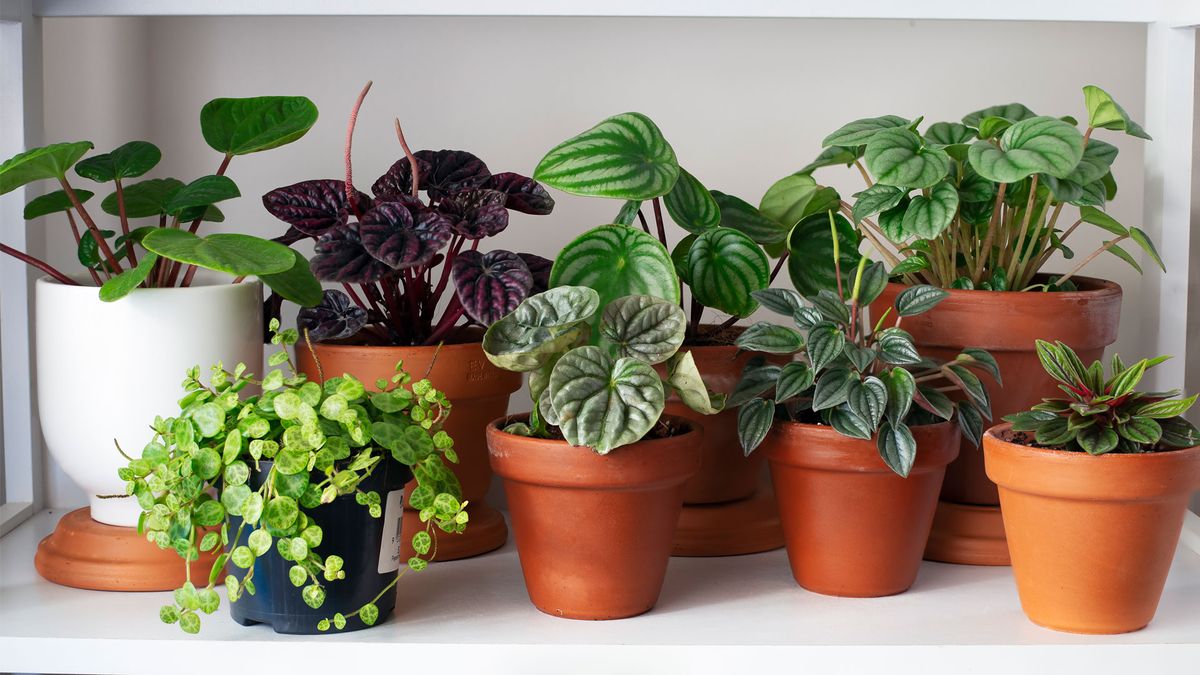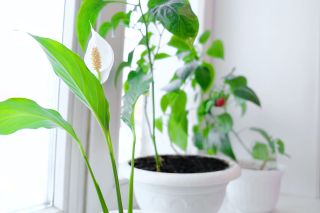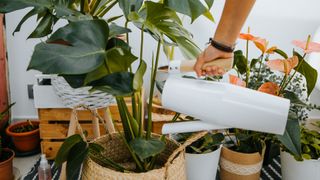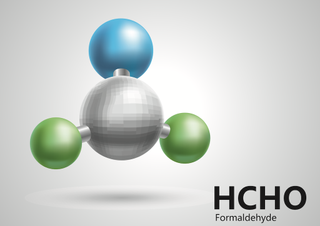Do indoor plants purify air?
House plants have become incredibly popular in recent years, but do indoor plants purify air? And to what extent?

House plants have become incredibly popular in recent years, but do indoor plants purify air? And to what extent?
Since the COVID-19 pandemic began, there's been a huge focus on the importance of indoor air quality since so many of us have spent increasing amounts of time inside.
Further to this, the Environmental Protection Agency (EPA) reports that Americans spend up to 90% of their time indoors, where levels of pollutants can be up to five times higher than outside air. And that's one of the many reasons why it's essential to ensure the air we breathe indoors is as clean as possible. Yes, you could look at getting one of the best air purifiers, such as a Dyson air purifier, to improve your home's air quality, but even when discounted, they can be expensive.
So, while house plants are sometimes advertised as air purifying plants for your home, is there actually any truth in that? Here we look into the science behind indoor plants and their effect on air quality.
Related: What is the air quality index?
How do indoor plants purify air?
You might already know that air quality, in general, is affected by carbon dioxide, carbon monoxide, nitrous oxide, as well as volatile organic compounds (VOCs), which can exist in some of the products and materials inside our homes, according to the EPA.
Through the process of photosynthesis, plants convert the carbon dioxide we exhale and also remove gases from the air through a process called absorption.
In an often-cited 1989 NASA report, scientist Bill Wolverton claimed that household plants could provide a "promising economical solution to indoor air pollution." Wolverton studied the ability of plants to remove VOCs from the environment and their potential for use in deep-space missions. However, more recent research has poured cold water on the idea.

Scientists studying the effectiveness of indoor plants for the passive removal of ozone, found houseplants make "at best, modest contributions of about 0.9–9% to indoor ozone removal effectiveness," they reported in 2017 in the journal Building and Environment. The tests, performed in a laboratory to simulate the effects on a typical U.S. home, found houseplants barely affected the environment. To make a meaningful difference to the air quality of your home, you'd need to fill a room from top to bottom with plants, they suggest.
Related: How do air purifiers work?
While a single spider plant won't purify the air, a green wall covered in plants just might, found scientists in a study published in 2020 in the Journal of Environmental Management. The scientists concluded that a green wall filled with suitable plant species "can be used to create a horticulturally sustainable internal green wall, and improve the health index in the building interior environments."
So, in high enough quantities, plants can improve air quality. But what should we buy? Sadly, science doesn't have the answer (yet).
A 2018 paper published in Trends in Plant Science is confident that plants remove pollutants, but there is little research into which species are most effective. The paper concludes that "the capacity of plants to remove indoor air pollutants through stomatal uptake (absorption) and non-stomatal deposition (adsorption) remains largely unknown."

Which pollutants can indoor plants filter out?
The most common, harmful pollutants found indoors include trichloroethylene, formaldehyde, benzene, xylene and ammonia, according to the NASA study, Interior Landscape Plants for Indoor Air Pollution Abatement. Trichloroethylene can be found in paints and varnishes, formaldehyde in paper bags and synthetic fabrics and benzene in tobacco smoke and dyes. Xylene is released in car exhausts, while ammonia is found in window cleaners and floor waxes, according to NASA.
In high concentrations, these five pollutants can cause dizziness, headaches and irritation to nose, mouth and throat as well as liver and kidney damage. The results of NASA’s study showed two plants that work to reduce the levels of all five of these pollutants from indoors. These are peace lilies (Spatiphyllum ‘Mauna Loa’) and florist’s chrysanthemums (Chrysanthemum morifolium).

Do indoor plants have other health effects?
During COVID-19 lockdowns, many of us decided to get our hands dirty and get into gardening – but was there any health benefit to this?
In a study published in May 2021 in the journal Environmental Research, scientists studied 323 students and found that houseplants were linked to feelings of "being away while at home" providing a staycation for the mind that improves mental health.
While the benefits of plants purifying the air is less certain, a recent study from Princeton University finds that gardening is beneficial for physical and mental health. While another study cited in the Journal Physiological Anthropology involving young adult males found that indoor gardening lowered stress responses compared to the demands of completing a computer task. When sitting in front of a computer and asked to complete a task, researchers identified an increase in blood pressure, heart rate, and stress that wasn't present when the same group was gardening.

Are indoor plants safe for pets?
Introducing more plants and greenery to the home can have benefits, but are indoor plants safe for pets?
Most people know that lilies are dangerous to cats and tomato plants to dogs, but many other species also threaten the health and wellbeing of our pets. There are too many to list here but there's a full list of poisonous plants available on the ASPCA's website.
What happens if your pet does eat your plants? Alexander Campbell of the Veterinary Poisons Information Service (VPIS) said: "In many cases, animals remain asymptomatic or suffer little more than gastrointestinal upset. There are a few instances where more severe clinical effects have resulted."
One of the biggest challenges for vets is knowing what a pet has ingested, researchers caution. The simple solution? Remove any known contaminants from your home or garden. And, in case you're wondering, air purifiers are safe for pets, in the main.
While plants can make your home a more pleasant environment and taking care of them can have mental health benefits, it's unlikely they'll do much to purify the air — unless you're going to buy hundreds. So if you're concerned about air quality in your home, we advise you to invest in an air purifier, preferably one fitted with a high-quality HEPA filter.
Related: : Air purifier myths debunked
Additional resources
- Find out how NASA keep the space station’s air clean: Clearing the air in space
- Listen to a TED talk: How to grow fresh air
- Read a guide from the Environmental Protection Agency: Guide to Air Cleaners in the Home
Sign up for the Live Science daily newsletter now
Get the world’s most fascinating discoveries delivered straight to your inbox.
Lawrie is a journalist and editor who writes about healthcare, science, technology, engineering and design. He's worked for some of the UK and Europe's leading titles, making complex science as simple as possible. He also owns content agency 42group where he helps household brands, academic institutions and charities to grow through engaging, informative and inspirational words.
- Ailsa HarveyContributor













